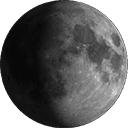Low-amplitude variations detected by CoRoT in the B8IIIe star HD 175869
Author(s): Gutierrez-Soto, J.; Floquet, M.; Samadi, R.; et al.
Source: ASTRONOMY & ASTROPHYSICS Volume: 506 Issue: 1 Pages: 133-141 DOI: 10.1051/0004-6361/200911915 Published: OCT 2009
Context. The origin of the short-term variability in Be stars remains a matter of controversy. Pulsations and rotational modulation are the components of the favored hypothesis.
Aims. We present our analysis of CoRoT data of the B8IIIe star HD 175869 observed during the first short run in the center direction (SRC1).
Methods. We review both the instrumental effects visible in the CoRoT light curve and the analysis methods used by the CoRoT Be team. We applied these methods to the CoRoT light curve of the star HD 175869. A search for line-profile variations in the spectroscopic data was also performed. We also searched for a magnetic field, by applying the LSD technique to spectropolarimetric data.
Results. The light curve exhibits low-amplitude variations of the order of 300 mu mag with a double wave shape. A frequency within the range determined for the rotational frequency and 6 of its harmonics are detected. The main frequency and its first harmonic exhibit amplitude variations of a few days. Other significant frequencies of low-amplitude from 25 to a few mu mag are also found. The analysis of line profiles from ground-based spectroscopic data does not detect any variation. In addition, no Zeeman signature was found.
Conclusions. Inhomogeneities caused by stellar activity in or just above the photosphere are proposed to produce the photometric variability detected by CoRoT in the Be star HD 175869. The hypothesis that non-radial pulsations are the origin of these variations cannot be excluded.






